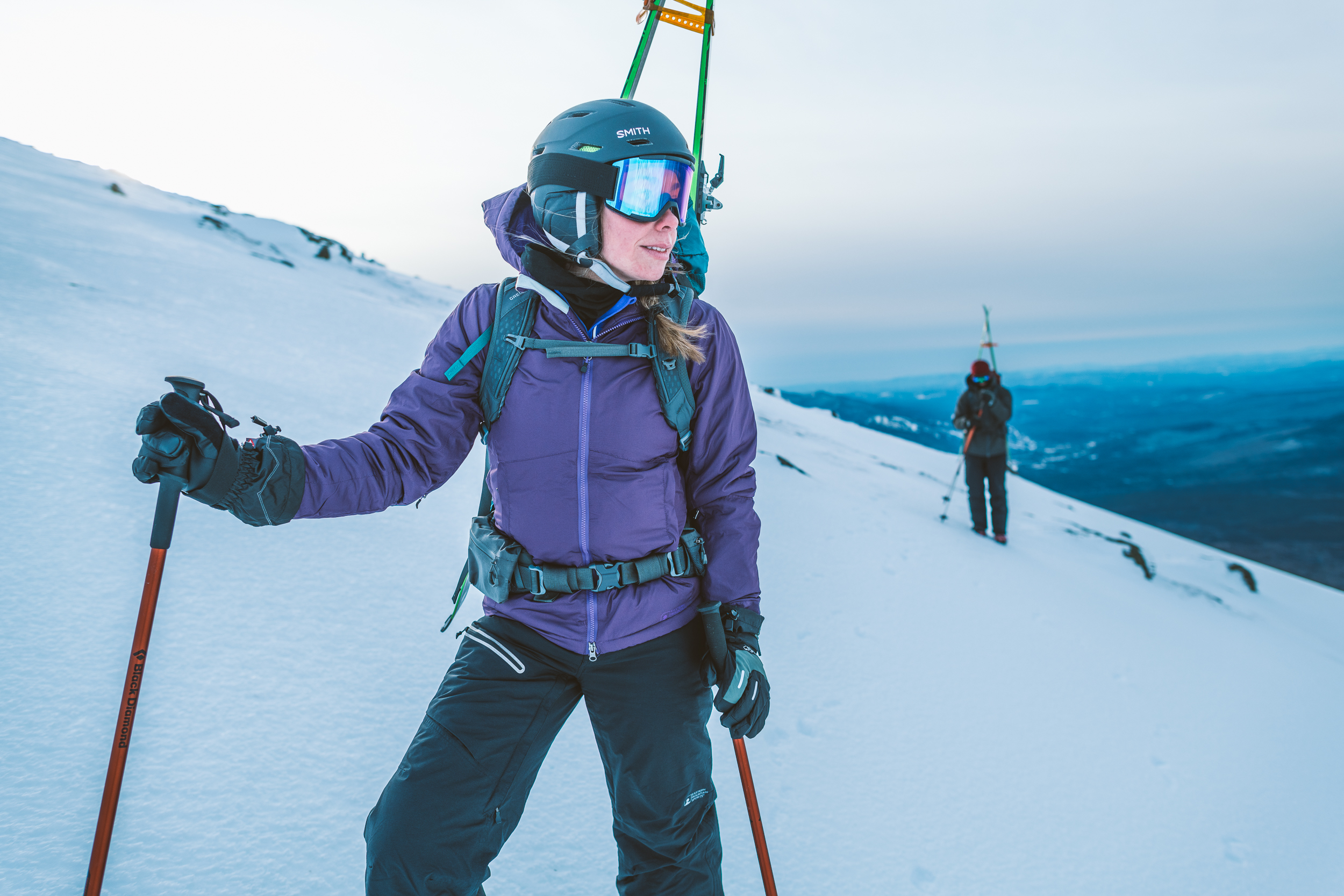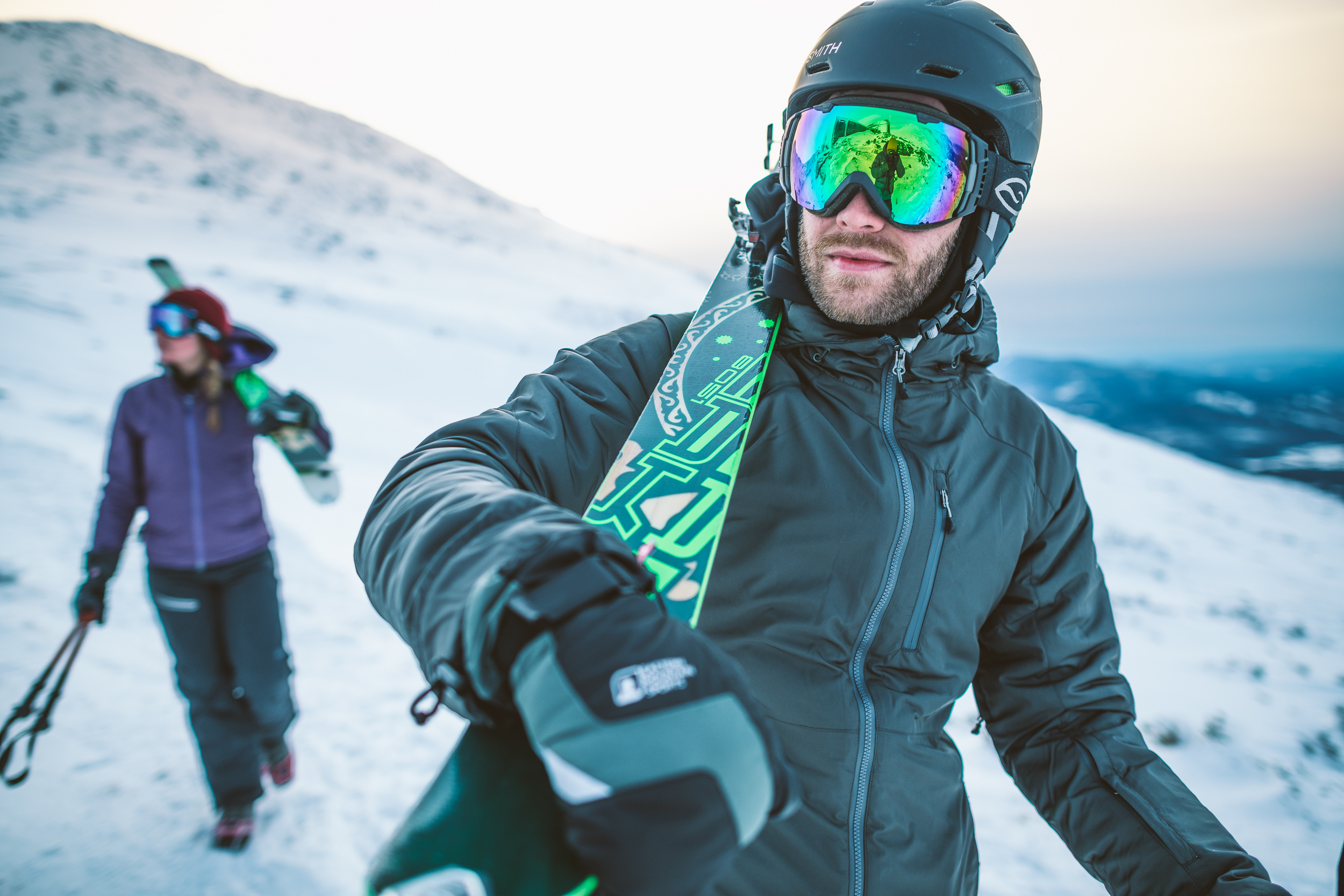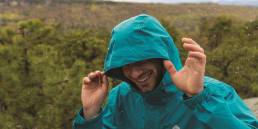Goggles are an essential part of any skier/snowboarder’s kit. They protect your eyes from wind, snow, debris, and sun and even guard against stray branches when in the woods. While it’s tempting to choose goggles based on their looks or coordinate them with the rest of your kit, a goggles’ lens color plays a significant role in how they perform. On top of that, the changing conditions day to day or even hour to hour can make picking the perfect lens complicated.
What is Visible Light Transmission (VLT)?
You’ll see the term Visible Light Transmission, or simply VLT, come up often in conversations about ski goggles. VLT is a complex-sounding term for a relatively simple concept: It’s how much light passes through the lens to the eyes. VLT is expressed as a percentage—the higher percentage, the more light that passes through the lens. Conversely, the lower the percentage, the less light that passes through the lens.

Ski Goggle Lenses for Specific Conditions
Whether it’s the gray days of deep winter, bluebird spring skiing, or racking up a few runs night skiing, skiers in the Northeast can often feel like Goldilocks trying to find a pair of ski goggles that are “just right.” Because of this, many Northeast skiers opt for goggles with interchangeable lenses, allowing them to adapt to ever-changing conditions. That said, there are plenty of good options for skiers and riders looking for one lens to do it all.
Light Lenses for Overcast, Cloudy, and Storm Days
For the dark days of winter, overcast days of spring, and storm skiing, you’ll want to reach for a light lens. Light lenses—commonly in shades of gold, amber, orange, and rose—generally have higher VLT percentages and allow more light to pass through them. A good guideline for choosing the right goggles on overcast, cloudy, or storm days is to go with a lens with a VLT ranging from 60 to 90 percent.
Dark Lenses for Sunny Days
On sunny days, you’ll want to opt for a dark goggle lens that filters out more light. It’s common for dark lenses to come in green, gray, and black hues and have a lower VLT percentage. This allows them to prevent more light from passing through them than lighter lenses with higher VLT percentages. Lenses with VLTs under 25 percent are optimal for sunny skiing and riding.
Quiver of One for All Conditions
While it’s every skier’s and snowboarder’s dream to own a quiver of high-quality lenses ideally suited for every condition imaginable, for most of us it’s neither realistic nor practical. Luckily there are numerous lens options that work well in a wide variety of conditions. Rose- and amber-tinted lenses with VLTs ranging from 25% to 50% are good options for universal use.
When buying one lens for use in all conditions, think about the type of skiing you do the most. For example, storm-chasing powder hounds will likely want a lens on the lighter end of the spectrum with a higher VLT percentage. Conversely, fair-weather skiers who love skiing on sunny days will want to go for something a little bit darker with a lower VLT percentage.
Quick note, while lens color commonly correlates with VLT—roses and ambers with higher VLTs, and blacks and grays with lower VLTs—it’s not always the case. Make sure to check the VLT of the lens to confirm before pulling the trigger on a purchase.

Photochromatic Lenses
Another option for skiers and riders looking for a do-it-all lens is goggles with photochromatic lenses. Photochromatic lenses automatically adjust their tint in response to conditions. For example, in snowy or foggy conditions they lighten to allow more light in, and in sunny conditions, they’ll darken to offer more protection.
The downside to photochromatic lenses is that they’re typically more expensive than other types of lenses. The upside is that they truly offer a one-lens solution for skiing and riding in all conditions.
Clear Lenses for Night Skiing
There are occasions when you want to let in as much light as possible, like night skiing or a stormy day hiking the Winter Lion Head on Mount Washington. In these instances, a clear lens with a super-high VLT is preferable, they offer the protection of goggles but don’t interfere with visibility.

Other Characteristics to Look for in Lenses
While Visible Light Transmission and lens color are largely responsible for how a lens performs in specific conditions, there are a few other factors to consider when choosing a ski goggle lens.
UV Protection
UV protection in goggles is extremely important considering your eyes are subjected to UV rays from both the sky and reflecting off the snow. It’s standard for most goggles to offer 100 percent protection from all three types of UV rays (UVA, UVB, and UVC). That said, if you see a pair of goggles without 100 percent UV protection, it’s a potential indicator of inferior quality.
Polarization
Polarized lenses reduce the amount of light reflected off of the snow. This benefits skiers and riders by reducing the strain on your eyes—particularly on extremely bright days—and can add contrast and detail to what you see. The negative of polarized ski lenses is that they can make icy spots, a common occurrence at resorts in the Northeast, tricky to see.
Mirroring
Mirrored lenses have a coating on the outside of the lens that reflects more light than a non-mirrored lens, often between 10 and 50 percent. Mirrored lenses can also help reduce glare and hide your eyes—not a bad benefit when you’re staring down the secret powder stash that you don’t want anyone to see.
Shape
Lenses generally come in one of two shapes: cylindrical and spherical. Spherical lenses are horizontally and vertically curved, offering, among other things, better peripheral vision and less fogging. Cylindrical lenses, which are typically less expensive, have only a horizontal curve. The comparative flatness of the horizontal lens can increase glare in certain conditions.
Ski goggles are about more than looking good on the mountain—choosing the right lens type can improve performance, make skiing and riding safer, and increase your enjoyment on the mountain.

Tim Peck and Doug Martland
Tim and Doug met long ago at the Eastern Mountain Sports in Canton, Massachusetts. Bonding over a love of slick Quincy Quarry granite, White Mountain sufferfests, and scheming up adventures while folding tee-shirts, today Tim and Doug collaborate to write about their favorite outdoor activities and occasionally get nostalgic about tee-shirt tables.




